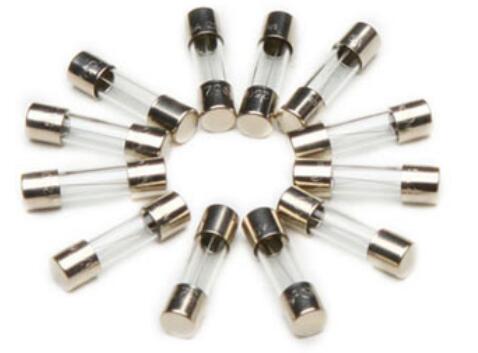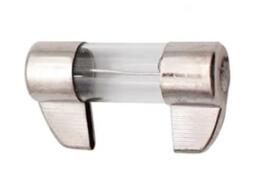Rated voltage of agc glass tube fuse
The rated voltage of the Auto Fuse Assortment is the maximum working voltage under the normal working state of the Glass Fuses 30mm Fast Blow Tube.
The fuse can only be used in circuits less than or equal to the service voltage, that is, the working voltage of the selected fuse must be greater than the normal voltage in the circuit. For example, 3a125v fuse can never be used in 250V withstand voltage circuit, but can be used in 125V and below circuits.
Calculate the rated current of fuse in
Rated current in = IRM / (SC * TC)
In represents the rated current of replacement glass tube fuses
IRM represents the maximum operating current in the circuit
TC represents the temperature decay rate (refer to the temperature curve)
The safety attenuation rate of American regulations is: SC -- 0.75
The safety attenuation rate of European regulations is: SC -- 0.9
The safety attenuation rate of the daily gauge is: SC -- 0.85
Main: the calculated in is the minimum rated current of the selected fuse, and the best rated current equal to or greater than in shall be selected.
Ambient temperature
Under the ambient temperature of 25 ± 5 ℃ at room temperature, the rated current of the fuse is not affected by the temperature. When the ambient temperature rises continuously, the rated current attenuation of the fuse will be greater when it works for a long time. When selecting the fuse tube, the influence of ambient temperature change on the fuse tube must be considered.
The increase or decrease of temperature will accelerate the fuse reaction and slow down the cargo. The curve is obtained through a large number of experiments.
Consider current pulse
Current pulse: including power on moment, voltage change and all other transient process pulses. The current pulse in the circuit can be measured by oscilloscope.
If the fuse is required to withstand the transient pulse generated under normal conditions (such as startup and shutdown) without fusing, the ability of the fuse to withstand the pulse shall be considered, and the slow break series will generally be selected.
Note: when selecting the fuse, the I of the surge is calculated according to the surge waveform generated in the actual circuit ² T value, and then use the "pulse cycle capacity" curve and the rated fusing thermal energy value of fuse tube (rated I of fuse tube ² T value), and finally the impact resistance times of the safety tube under this sudden wave can be calculated.
Pulse current in circuit I ² T value
According to the relevant waveform and calculation formula, I is approximately calculated ² T value (WP).
Current pulse withstand times
U = WP / WR, using pulse I in the circuit ² The value of T (WP) is divided by the rated fusing value (WR) of the fuse. According to the percentage of u and Figure 4, it can be seen that:
When u = 22%, it can withstand 100000 pulses
When u = 29%, it can withstand 10000 pulses
When u = 38%, it can withstand 1000 pulses
When u = 48%, it can withstand 100 pulses
Select rated current of fuse tube
Safety regulation attenuation coefficient
Temperature attenuation coefficient
Withstand pulse current and impact times (I) ² T value and fuse rating I ² T value comparison)
Routine testing of fuses
A. Overload test
B、I ² T test
C. Breaking capacity test
D. Insulation resistance test
E. Voltage drop test
F. Durability test
G. Temperature rise test
H. Failure test
Market demand for insurance management industry
A. Miniaturization: power adapter, charger, LED driver, etc. the demand for miniaturization of terminal products is mainly 2010 plastic square or 3 * 7mm.
B. High short circuit: the short circuit capacity of conventional fuse is below 130a250v, and the actual input short circuit current is about 150-250a.
C. Safety: the use of small-size fuse tubes for low power is increasing, but the phenomena of sound, light and smoke during short circuit can not be completely avoided.
D. SMD chip type: the requirements of miniaturization and automation parts of terminal products, but the SMD characteristics can not be met.












